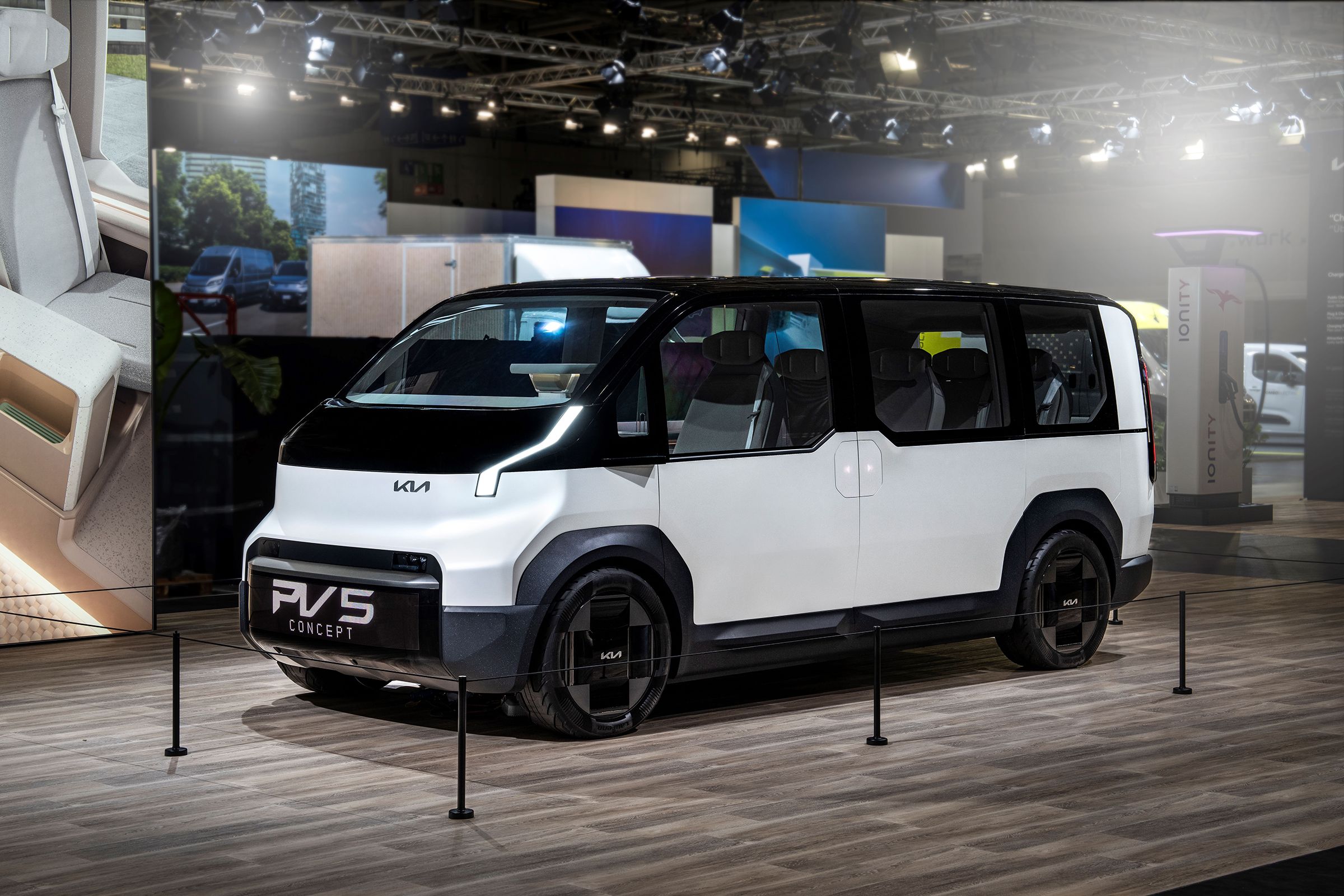- Kia recently unwrapped its futuristic electric vans called the PV5 and PV7 in Europe. They are part of what Kia calls a "Platform Beyond Vehicle" approach and are the carmaker's versions of a Ford E-Transit or the Volkswagen ID.
Kia showcased the PV5 WKNDR electric van, a wild off-road concept, at the 2024 Speed Equipment Manufacturing Association (SEMA) show in Las Vegas. Its off-road tyres are wrapped around rims that spin freely and can generate electricity using wind or water. The PV5 WKNDR is highly modular, with seats that turn into coffee tables and movable chairs.
Off-roaders may not be Kia's forte, but now the Korean auto giant intends to head into that space. Sure, the Sportage and the Telluride can trundle past some mild trails, but with the PV5 WKNDR electric van, Kia is showing us just how versatile a battery-powered electric van can be.
Kia recently unwrapped its futuristic electric vans called the PV5 and PV7 in Europe. They are part of what Kia calls a "Platform Beyond Vehicle" approach and are the carmaker's versions of a Ford E-Transit or the Volkswagen ID. Buzz Cargo—but more connected, more futuristic, more modular and, of course, fully electric.
What makes it unique are the tiny details. At the front, for example, it has a winch with a digital display mounted just above that shows how much weight the cables pull in real time. That display could be a message board or a digital license plate when it's not winching.
The "hydro turbine" wheels move independently from the off-road tyres and can generate electricity. No, it's not brake regen. It's something completely different. Say you're camping, and there's a gust of wind. The wheels will spin and harness that energy to recharge the battery, generating power using nature's forces while stationary.
Read More
It also has a large solar roof. Inside, it looks far more spacious than its exterior dimensions indicate. Think of it as a living room with several movable pieces of furniture that you can reposition however you like, depending on the occasion—but with next-level modularity. The co-driver's seat can be folded into a coffee table and moved to the rear.
It has several bench seats neatly tucked into the van's walls. When they are tucked in, they can be modular racks for a variety of mounts. When you pull them out, there's a place to sit. When the co-driver seat is doing coffee-table duty, the modular rear seats can take its place—and even turn into a backwards-facing lounge chair.
Automakers can go wild with concepts, and that's what Kia has done here. But it also showcases the breadth of possibilities of an electric architecture. With fewer moving parts underneath, you can get creative inside, optimize interior space and turn electric vans into multi-purpose vehicles: delivery vans, campers, off-roaders, or even a stationary energy generator in this case.
There are ongoing debates on whether this will ever make it to production. Nevertheless, there is hope that it does because it takes van life to the next level. However, it's worth noting that the PV5 electric van is entering production in South Korea next year and that one is likely headed to the U.S. in 2026. However, those plans could change depending on how EV policy and tariffs change next year under the new administration.







